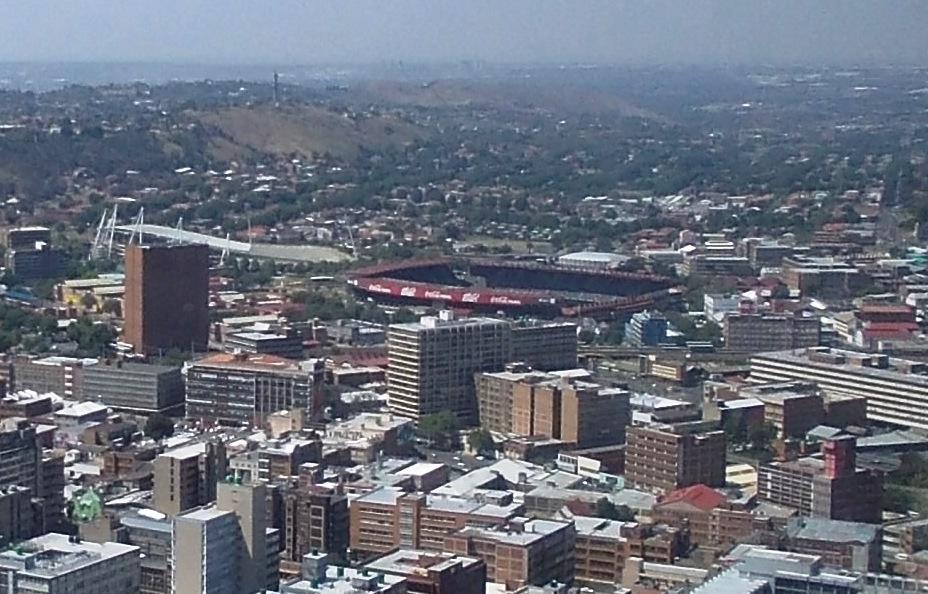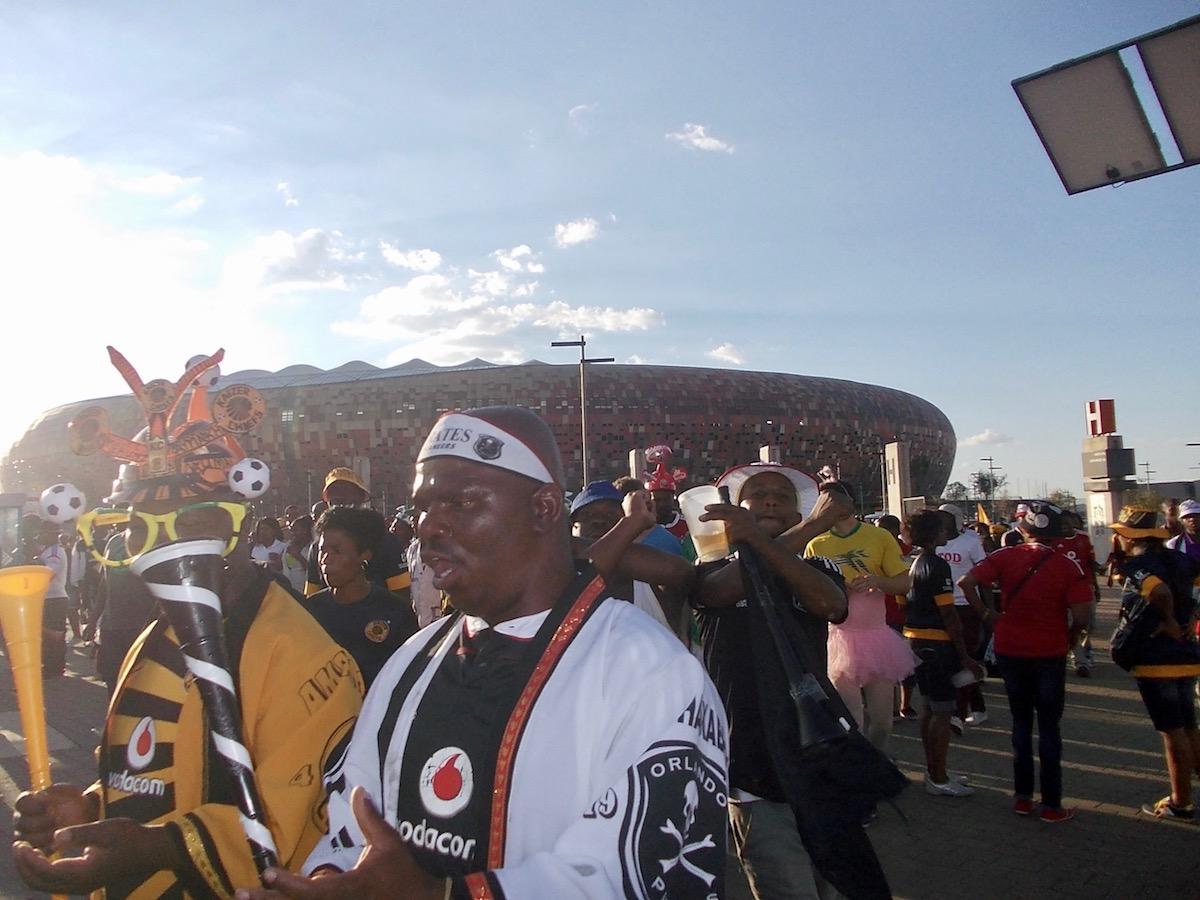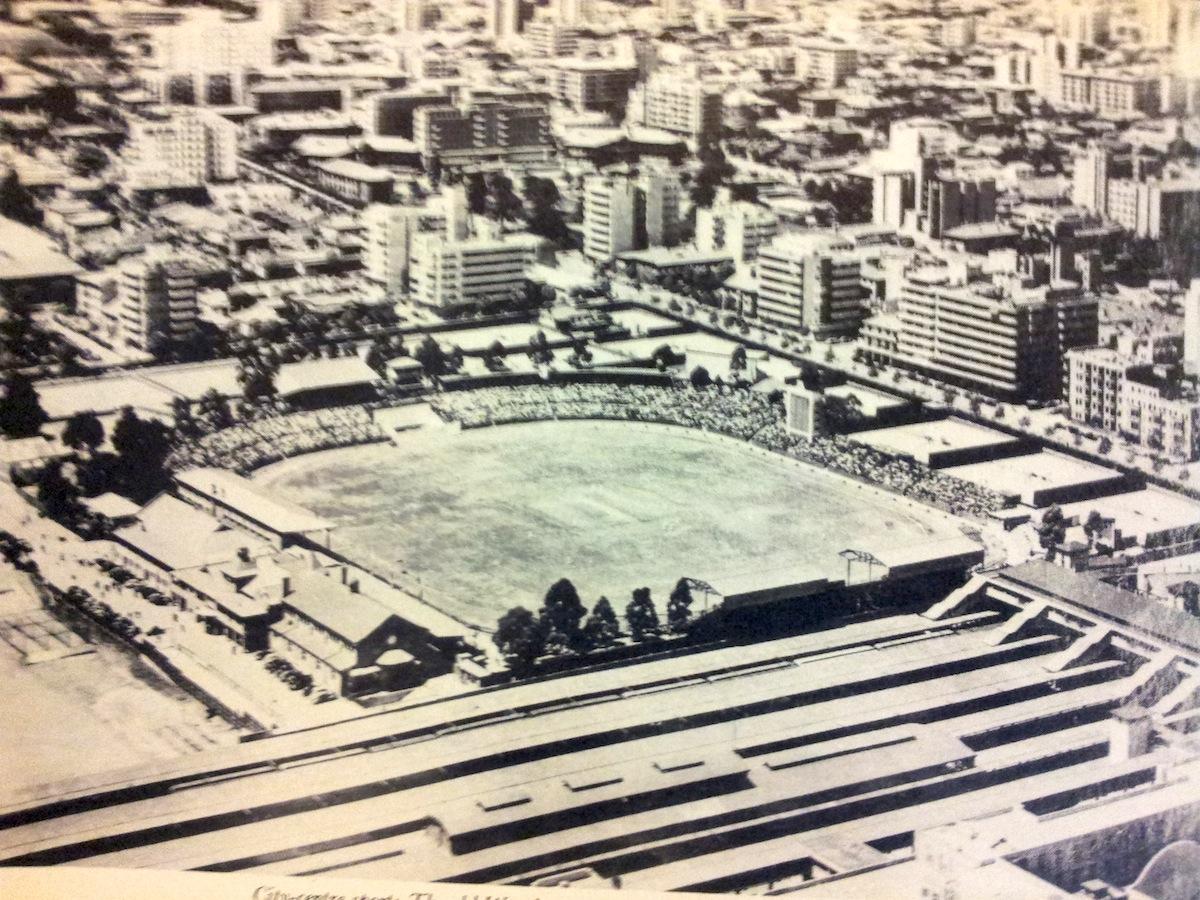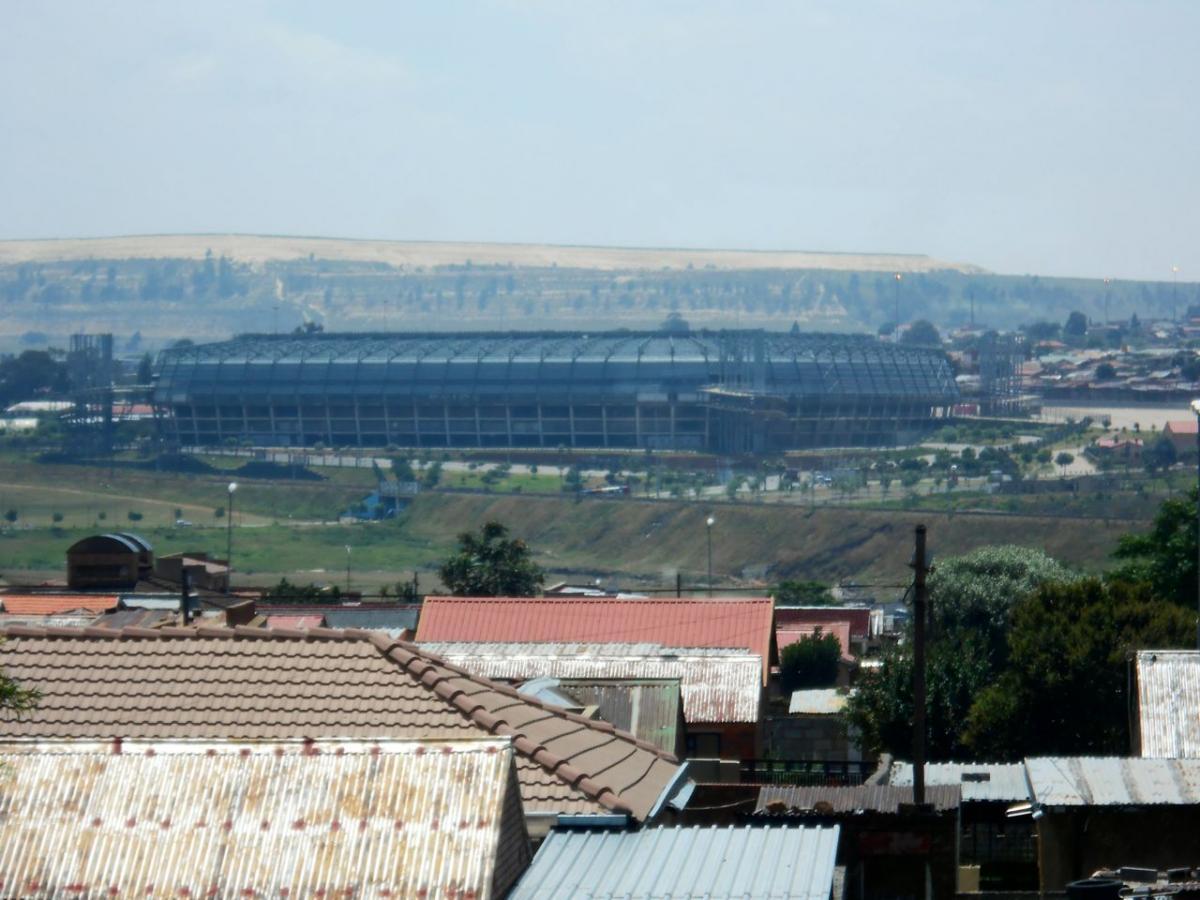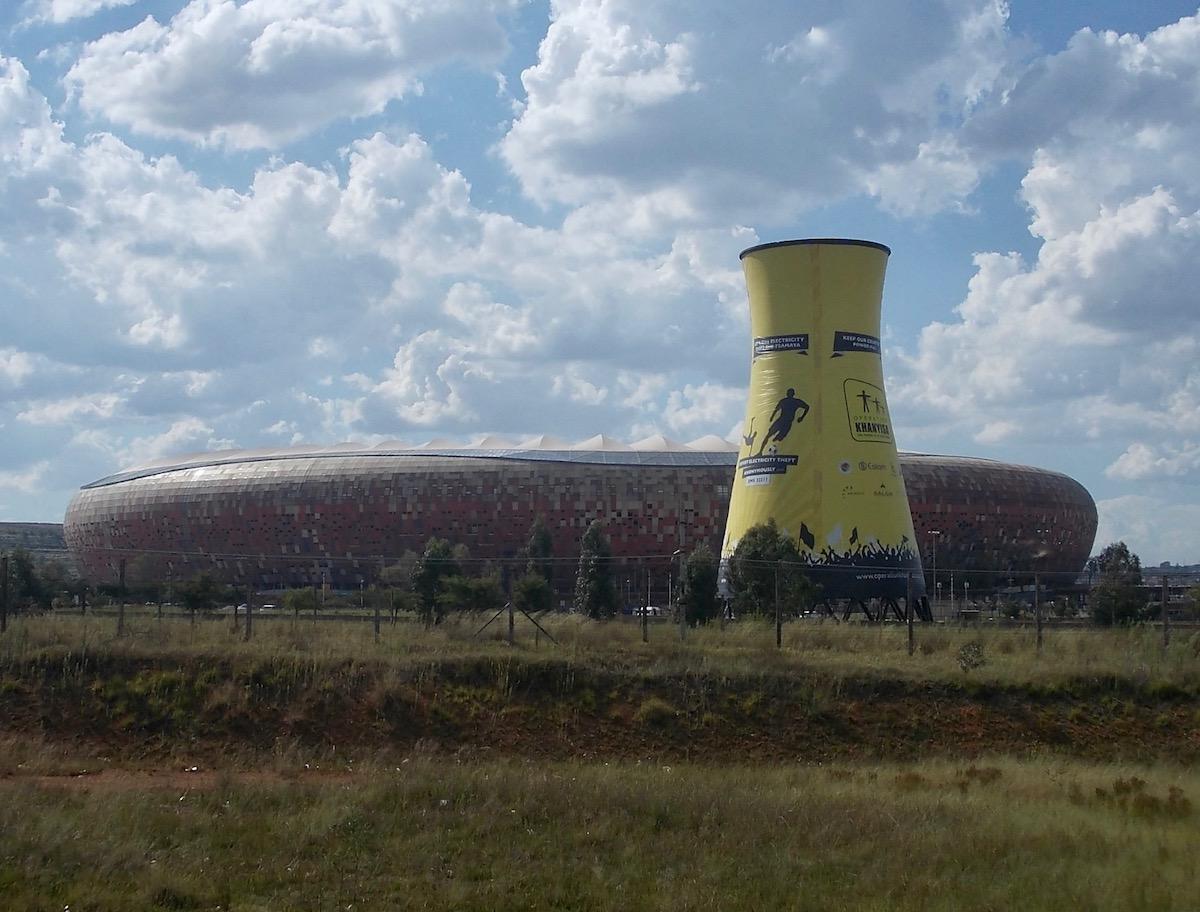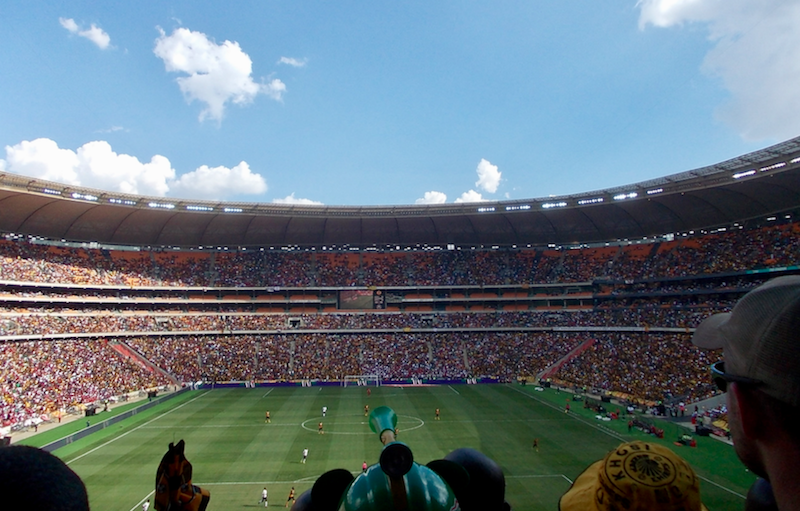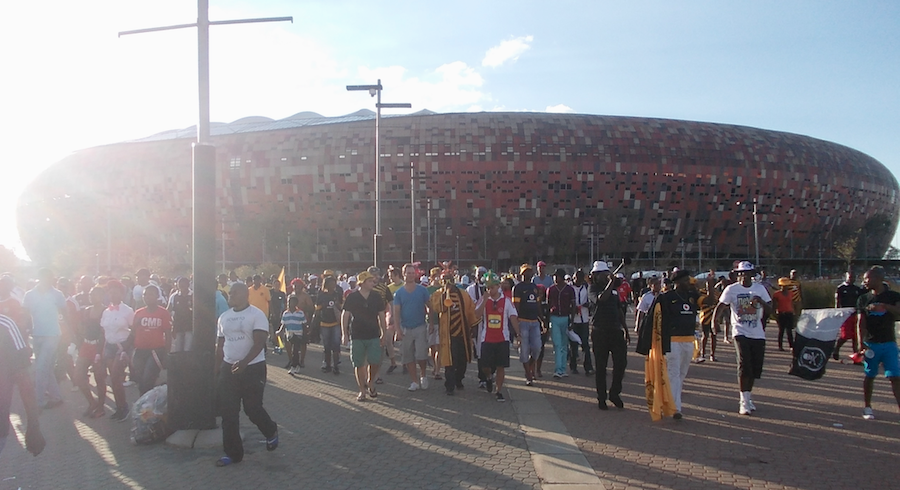
Disclaimer: Any views expressed by individuals and organisations are their own and do not in any way represent the views of The Heritage Portal. If you find any mistakes or historical inaccuracies, please contact the editor.
In the article below, journalist Lucille Davie tells the story of the infrastructure preparation for the 2010 World Cup and reveals the fascinating history of soccer in Johannesburg. The article was first published on the City of Joburg's website on 14 February 2007. Click here to view more of Davie's work.
The Rand Stadium, the city’s oldest stadium, was built over 50 years ago because an earlier stadium became too small. But the 21st century has caught up with the stadium: it has been demolished because it too has become too small for the 2010 Fifa World Cup games.
Soccer has been played in the city for almost 120 years, and Joburg will be a major venue for the tournament.
“We are the only city in the country that will provide two host stadiums as well as the headquarters for Fifa and Local Organising Committee prior to, during and immediately following the event,” said the Executive Mayor Amos Masondo.
The city has four major soccer stadiums – FNB, Ellis Park, Orlando and Rand. The former two will undergo major revamps to become match venues, while the latter two are to be training venues, and have been demolished, to be replaced by stadiums that will accommodate many more fans and have much improved facilities.
View towards Ellis Park from the Carlton Centre (The Heritage Portal)
Johannesburg is undertaking a huge rejuvenation of its stadiums, with an additional four stadiums - to be used as training venues - also having millions pumped into them. These stadiums – Dobsonville, Cecil Payne, Rabie Ridge and Ruimsig – are dotted around the suburbs, and will be legacy projects, providing the city’s residents with excellent facilities beyond 2010.
“These legacy projects will ensure that city residents will continue to benefit from economic investment and consumer spending during the 2010 Fifa World Cup period and long after the final whistle has been blown,” added Masondo.
History of soccer
Soccer has been played in Joburg since 1888, two years after gold was found on the reef. It was mostly amateur soccer but still very competitive, according to Johannesburg, one hundred years, a 1986 centenary publication.
“In the hundred years since Johannesburg was founded, few sports have undergone such dramatic changes as soccer.”
As different people made Joburg their home, clubs of various descriptions were formed, suggesting a very active sporting community.
In 1896, Indian football clubs came together to form the Transvaal Indian Football Association, indicates sahistory.org. Ten years later, in 1906, black clerks from KwaZulu-Natal, working at the Simmer and Jack mine in Joburg, formed the Old Natalians.
It was just a matter of time before formal soccer bodies began to take shape. In 1929 the Johannesburg Bantu Football Association was formed. In 1932 the South African Football Association (Safa) was formed, and a year later the South African Bantu Football Association and the South African Coloured Football Association were formed. Africans, Indians, and coloureds pooled their associations in 1935 to form the Transvaal Inter-Race Soccer Board.
Then, some of the country’s big names in soccer clubs came about. In 1937 Orlando Pirates was founded and 10 years later, in 1947, Moroka Swallows came into being. Much later, in 1971, Kaizer Motaung’s All-Star XI was renamed Kaizer Chiefs, records sahistory.org.
Orlando Pirates and Kaizer Chiefs fans (The Heritage Portal)
In 1951 the South African African Football Association, the South African Indian Football Association and the South African Coloured Football Association formed the anti-apartheid South African Soccer Federation.
Soccer was a playground for apartheid’s divisive policies, with whites striving to keep their games separate from other races.
In 1952 Safa, representing whites only, was admitted to the Federation of International Football Associations (Fifa), says sahistory.org.
Four years later Safa changed its name to the Football Association of Southern Africa (Fasa) and, as a result of pressure from Fifa, deleted “the racist exclusionary clause from its constitution”.
In 1958 the South African Bantu Football Association affiliated with Fasa and Fifa subsequently officially recognised Fasa as the sole governing body of soccer in South Africa. The following year The National Football League (NFL) was launched as the country's first entirely professional club league but was reserved for whites. In the same year, 1959, Orlando Stadium in Soweto opened.
In 1961 Fifa suspended Fasa, forcing it to include several black players within its structure. In frustration, African, Indian, and coloured officials in the anti-apartheid South African Soccer Federation formed the anti-racist professional South African Soccer League.
In 1956 Stephen “Kalamazoo” Mokone and David Julius became the first black South Africans to sign professional contracts in Europe, with Cardiff City and Sporting Lisbon respectively. Two years later Darius Dhlomo also went international, joining Heracles.
In 1959 women’s football in South Africa began. In 1962 Orlando Pirates Women’s Football Club and Mother City Girls were among the first, albeit short-lived, black women’s football teams. In 1965 Moroka Swallows won their first national championship in the South African Soccer League.
In 1963 Fifa lifted the Fasa suspension but soon afterwards Fasa announced that it would send an all-white team to the 1966 World Cup, and an all-black team to the 1970 World Cup. Fifa president Stanley Rous got Fasa temporarily reinstated in 1963, but Fasa was again suspended in 1964 and eventually expelled from Fifa in 1976.
The Football Council of South Africa was formed, chaired by George Thabe. In 1977 the National Football League folded.
In 1983 Jomo Sono bought Highlands Park, an historically white club in Pretoria and renamed it Jomo Cosmos. This move by Sono signalled growing black power in South African soccer.
Two years later, in 1985, the breakaway National Soccer League (NSL) was launched in accordance with anti-apartheid principles.
In 1989 The First National Bank stadium, with a capacity of 80 000, opened at Soccer City at Nasrec.
In 1991 four historically divided and entirely separate bodies united and formed the non-racial South African Football Association (Safa) in Durban. The following year Safa was accepted back into Fifa. Domestic soccer was reorganized along non-racial, democratic principles at last.
In July 1992 South Africa re-entered international football by hosting its first fully representative international soccer match at King's Park Stadium in Durban. The South African national team, later known as Bafana Bafana (the boys), defeated Cameroon 1-0.
Three years later, in 1995, Orlando Pirates won the African Champions’ Cup. The following year South Africa hosted the African Cup of Nations. They went on to become the champions of Africa after beating Tunisia (2-0) at the FNB stadium. In the same year The Premier Soccer League was launched.
In 1997 South Africa qualified for the 1998 World Cup with a 1-0 victory over Congo at the FNB stadium, but went out in the first round of the world cup in France the following year. Then, on 15 May 2004 South Africa won the bid to host the 2010 Fifa World Cup.
The building of the Rand Stadium
Soccer was played for many years at the old Wanderers Club, near the present-day Park Station.
The decision to build the Rand Stadium came about, when in 1945, the South African Railways expropriated the ground used by the Wanderers Club, for an expanded station. The club was given six months to move, according to historian Sue Krige in a September 2006 historical survey, conducted on behalf of the city.
Then, a particularly popular soccer game played at the club sealed its fate. The grounds could not accommodate all the fans, says Krige.
“Gross overcrowding at a ‘wildly popular soccer final’ in August 1945 demonstrated that Wanderers simply did not have the capacity to host such games.”
Old Wanderers Stadium from above
A lengthy court battle ensued; the club finally took leave of its premises in October 1947. But that was not the end of it. The new Wanderers was built in its present location in Illovo, but it “did not offer a suitable stadium for soccer matches”. Krige says that soccer was not as popular in the northern suburbs as it was in the southern suburbs.
There was another factor: “Its members also prided themselves on the club’s grandeur and elite nature.” This cost them considerably in lost revenue. But the final nail in the coffin for soccer in the northern suburbs was the large numbers attending soccer matches – the Wanderers Stadium in Illovo was just too small for the crowds, and furthermore, too far away and therefore too expensive for fans to make their way up north.
A stadium down south
It was decided to build a stadium down south. In November 1948 the City leased land at the Hector Norris Park near Wemmer Pan for 30 years to the Southern Transvaal Football Association (STFA), says Krige.
The STFA borrowed £60 000 and construction started in 1949. In 1951 a stadium seating 15 000 was opened.
Some of the world’s top teams played in the stadium, according to Johannesburg, one hundred years: Motherwell, Wolverhampton Wanderers, Newcastle United, Ajax, Tottenham Hotspur, Real Madrid and Arsenal. “For eight years, amateur soccer thrived at the Rand Stadium.”
In 1959, three white soccer personalities - Viv Granger, Syd Chaitowitz and Eric Litchfield – led the drive to turn professional, with the founding of the National Football League (NFL), an all-white league. Major amateur soccer clubs turned professional, and wanted to hire the Rand Stadium. But by then STFA was in trouble, the original agreement with the city being that mostly amateur matches were to be played in the stadium.
”Now that so many soccer clubs had turned professional, the lease needed to be revised, to protect the council’s investment,” says Krige.
The hiring of the stadium for professional matches had not improved the financial situation of the STFA, and in January 1961 the council took possession of the stadium, paying R290 000 in compensation in July 1963. Between June 1964 and July 1965 extensive renovations were carried out, including building additional change rooms, club rooms, a first-aid room, a VIP stand and additional seating. The NFL also moved its offices to the stadium.
Initially it seems there were separate ablution facilities and stands for blacks, by permission from the department of community development.
The 1969 council records show that the stands were to be demarcated by “tubular piping barriers”. But the South Africa Police demanded more: that a six-foot high fence had to be erected. This was duly done.
Several matches pitting black teams against white teams ended in tense stand-offs between the teams. In 1976 South Africa was expelled from Fifa.
The advent of television in 1976, says Krige, changed the outlook for the stadium. Some R140 000 was spent on television and flood lighting at Rand Stadium, and the fields were upgraded.
By the mid-1980s, Rand Stadium, although needing attention, was used for a number of other purposes: a road race venue, international boxing pulled in 15 000 people, several rock festivals, and a Jehovah’s Witness rally that attracted 30 000 people.
Although used consistently, the stadium was in need of a serious revamp, a process already set in motion. In 2006 the old stadium was demolished, and a new stadium will rise from its ashes. Deon Venter, assistant director of capital projects in the department of community development, says construction of the new stadium has already begun, with completion expected by August 2008.
Because of the age of the stadium, it has been recommended that the scoreboard will be retained for heritage purposes. A photographic display will be erected to indicate the history of the stadium. Around R76-million is to be spent on the stadium.
Orlando Stadium
In 1959 the Orlando Stadium in Orlando East in Soweto, was built, seating 24 000 people.
All local PSL and league matches were played at the stadium, which was also used for big political rallies and funerals. Schools have used the stadium extensively over the years, for soccer as well as volleyball and netball matches. Its gravel track was used by schools for athletics.
It will be one of the training venues for the World Cup and is the home of premier soccer league club Moroka Swallows. The stadium was demolished in mid-2006 and is being rebuilt at a cost of R337-million, to seat 45 000. Work on the new stadium is well advanced, and is expected to be completed in mid-2008.
Venter says: “The construction of the new stadium is going very well – we are ahead of time.”
Orlando Stadium (The Heritage Portal)
Ellis Park Stadium
The ground that is today Ellis Park Stadium has always been used for sporting and recreational functions. In 1908 the site consisted of the town’s only “swimming bath, a lake, tennis courts, playing fields and terraced promenades”, say Naomi and Reuben Musiker in A concise historical dictionary of Greater Johannesburg.
Perhaps this was the ideal site for a swimming pool because in the very early days of the town a spring at Ellis Park supplied the town with water. That spring is still there, but is diverted down the valley through Bruma Lake, joining the Jukskei River after Gillooly’s Farm.
Prior to 1908 the site consisted of old brickfields and disused reservoirs, write the authors. The site got its name from John Dowell Ellis, mayor of the town from 1911-1912, and chairman of the Parks and Estates Committee.
Rugby and tennis were played at Ellis Park from the 1920s, the stadium becoming one of the world’s most famous stadiums, records Johannesburg, one hundred years.
Before the spectacular new 50 000-seat stadium was built in 1982 it saw many great matches played within its many stacked rows of seats: the All Blacks, the first time they toured South Africa in 1928; the first Wallabies tour of the country in 1933; the 1938 Lions tour in which Fanie Louw scored South Africa’s 100th test try; the All Blacks again in 1949 and 1960, and the Wallabies again in 1953.
Plans were made for a new stadium. “The Ellis Park Stadium with its famous glasshouse was demolished to make way for the ultra-modern stadium that ranks with the best in the world,” according to Johannesburg, one hundred years.
It was opened in 1982 with 20 tennis courts alongside the rugby and soccer stadium. “Ellis Park has proved to be a launching pad to international fame for many young South Africans, and over the years a glittering cast of local and overseas talent has graced its courts.”
The courts witnessed “the most glorious chapter in South African tennis history” with the winning of the Federation Cup in 1972. And in 1995 the final of the world rugby cup, in which South Africa was the champion, was played in Ellis Park.
The stadium will get an additional 10 000 seats in preparation for the 2010 World Cup.
The FNB Stadium or Soccer City
Soccer City, with a seating capacity of 80 000, is the largest stadium on the African continent. By the time 2010 arrives, this will have been increased to 94 700 and it will host both the opening and closing matches of the tournament.
Around R1,2-billion has been set aside to upgrade Soccer City at Nasrec for the 2010 Soccer World Cup.
Built in 1989, the two-tiered stadium will also have an encircling roof added, new change room facilities and new floodlights in addition to a special feature that will allow a smaller arena to be created. The expansion project will be complete by March 2009.
Completed Soccer City (The Heritage Portal)
Inside Soccer City (The Heritage Portal)
Traditionally the home of Orlando Pirates, Soccer City is used for Premier Soccer League games as well as internationals. Most recently it was the home base for Kaizer Chiefs.
The stadium has also been the site of several major political gatherings: Nelson Mandela’s first speech in the city in 1990, and the funeral of Chris Hani in 1993. It will be the stadium where the final and opening matches will be held, as well as five first-round matches, one second-round match and one quarter-final.
”I would like to assure you from the outset that Johannesburg is ready and prepared to take on the challenge of hosting all relevant events and matches. Significant progress in the preparations are self-evident!” said Masondo.
Lucille Davie has for many years written about Jozi people and places, as well as the city's history and heritage. Take a look at lucilledavie.co.za
Comments will load below. If for any reason none appear click here for some troubleshooting tips. If you would like to post a comment and need instructions click here.

